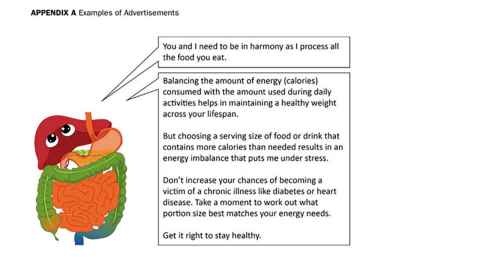It’s time to rethink scare tactics in health ads – study
23 July 2025
Fear-based health campaigns may grab attention, but could the use of more positive emotions generate better outcomes?

Gruesome smoking warnings, frightening obesity statistics and shocking drink-driving campaigns all use fear to drive behaviour change. But a University of Auckland researcher says it might be time to try a different approach.
Marketing lecturer Dr Saira Raza Khan, whose work focuses on consumer well-being and meaningful consumption, says gratitude can be more effective than fear when it comes to promoting healthier choices.
“I don’t think fear in advertising is beneficial for people’s mental health and well-being,” says Khan. “We’re already going through negative emotions in relation to other elements of our lives – the news, work stress, etc. Why not use emotions in health advertising that promote well-being?”
Her article, published in the Journal of Advertising Research, examines how different emotional appeals (fear and gratitude) influence people’s responses to diet-related messages.
“Fear tends to make people focus inward – on protecting themselves – and doesn’t always lead to lasting change. Gratitude, on the other hand, helps people feel more connected to others and can lead to more sustainable behaviour change.”
What might gratitude in a health campaign look like?
It could be the donation of a smiling organ. Or a friendly vaccine, shaking the hand of a medical professional.

Gratitude, Khan says, is not just a positive emotion but an “inherently other-focused emotion,” which boosts our sense of connection and belonging.
“When a person is scared and fearful, they’re not as receptive to others. They might have heightened awareness of threats – push away the message and close off,” she says. “But when a person is feeling grateful, they tend to be more open to people, and to messages.”
To test how fear and gratitude work in health advertising, Khan and her colleagues conducted three studies. One involved 297 participants who were shown health ads using either fear, gratitude, or neutral messaging. Half the participants were shown an ad with human-like (anthropomorphic) cues, and the other half were shown an ad without anthropomorphic cues.
The researchers included an image of a digestive system featuring eyes and the message: 'You and I need to be in harmony as I process the food you eat.' A heart with eyes featured under the heading ‘Think of a time when you felt grateful about your health’.
After analysing the ads, participants were asked to choose between two chocolate bars: Chocolate A (taste rating: 4 out of 5, health rating: 2 out of 5), and Chocolate B (taste rating: 2 out of 5, health rating: 4 out of 5).
The results showed that gratitude-based ads featuring human-like imagery were more likely to lead people to choose the healthier option. Fear, by contrast, was more effective when these human-like cues were absent.
The findings suggest that combining gratitude with human-like visuals may be a powerful way to encourage healthy behaviour.
“Obesity rates are still climbing, and public health campaigns need better tools to prompt long-term change,” says Khan. “This approach is more ethical and age-inclusive. It may also have wider reach.”
She says a shift toward gratitude could offer a more sustainable and ethical path forward for public health campaigns, especially as part of what researchers call ‘transformative advertising’ – campaigns that aim not just to persuade, but to foster well-being and positive social change.
Read the paper: Gratitude in Health Messages: The Moderating Role of Anthropomorphism. It is co-authored with Dr Vivian Pontes (University of Technology Sydney), Professor Yuri Seo (University of Auckland), and Associate Professor Felix Septiano (University of Queensland).
Media contact:
Sophie Boladeras, media adviser
M: 022 4600 388
E: sophie.boladeras@auckland.ac.nz